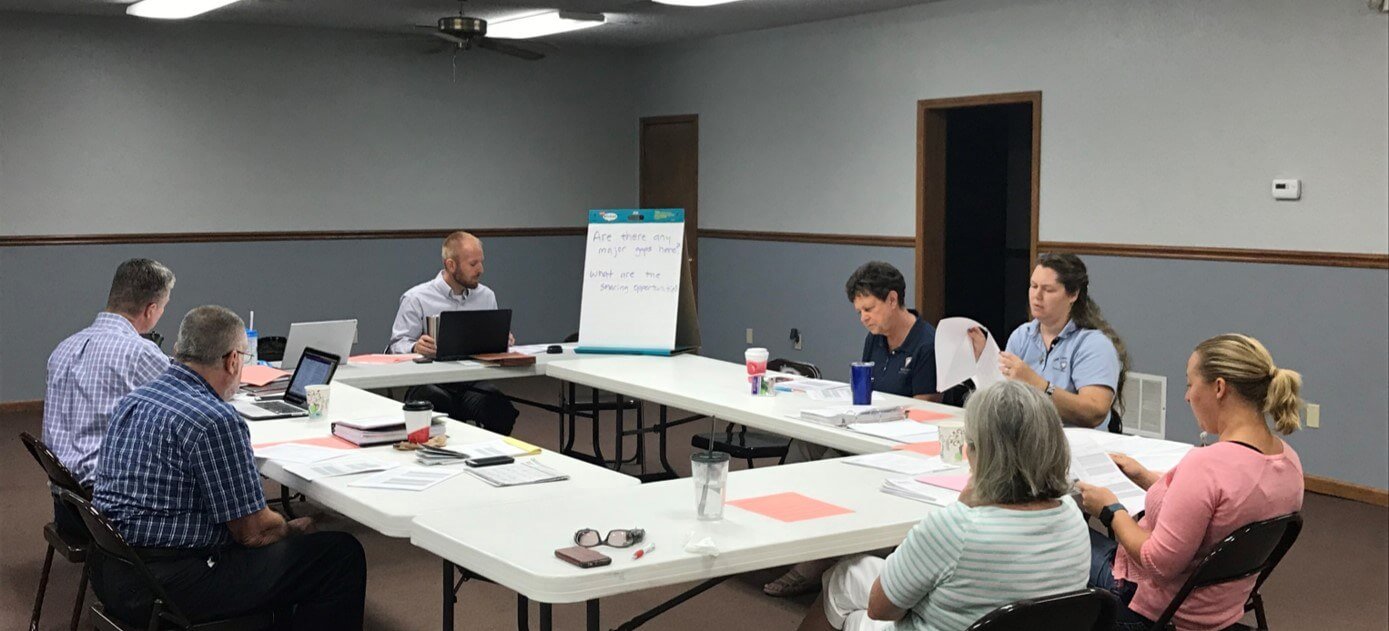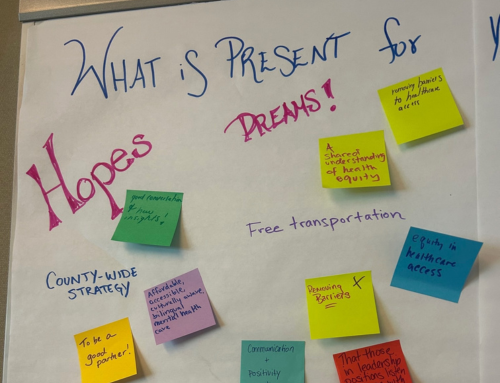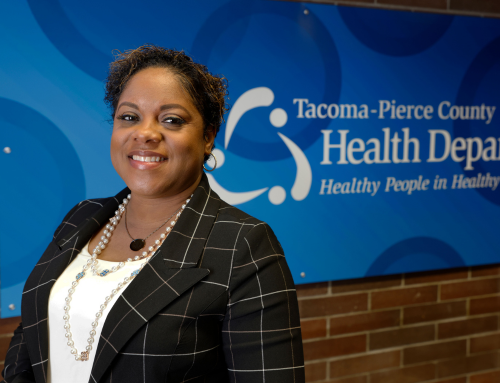The Kansas Public Health Systems Group (PHSG), a partnership representing public health practice, academia, government, and charitable organizations, has explored options for implementing the foundational public health services (FPHS) since 2015. More recently, the partnership has engaged cross-sector partners to determine the feasibility of applying the model in a rural, decentralized state, and has made progress toward implementation of FPHS in Kansas.
Using a working definition and characteristics of innovation in public health, and with funding from PHNCI, the Kansas Association of Local Health Departments (KALHD) is advancing planning, piloting, and documenting the evolution of the FPHS model in Kansas, as well as evaluating the use of cross-jurisdictional sharing (CJS) for specific FPHS components. This project includes developing a state modernization roadmap and creating a performance management system with measures to increase efficiency, effectiveness, and accountability. The roadmap is intended to highlight milestones that will need to occur at the system/state level to move more local health departments in Kansas toward implementation of FPHS, as well as decisions that local departments will need to make when planning for implementation. It will include information about the realities and limitations of the current system and the need for change to a modernized system via FPHS, legal implications, and governance and service delivery options for local jurisdictions to consider, with a focus on CJS strategies.
The KALHD Board of Directors set the vision for local public health to implement the FPHS model in the fall of 2015. To that end, working with our system partners, we have completed research, conducted assessments, and worked hard to engage public health officials across the state in these efforts. In our decentralized state, implementation of FPHS may look different across the state and will likely occur in phases. It is our hope that the roadmap will be a valuable resource for local jurisdictions as they determine how to move forward.
Implementing the FPHS model in Kansas will be a long-term system change effort, taking place at the same time that departments across the state are challenged by reduced resources and external pressures caused in part by political, economic, and population changes. For efforts to be successful, it is imperative to build an evidence base to demonstrate that such change is not only feasible, but also necessary to provide a solid basis of support for and justification to preserve public health across the state, and ensure that residents have access to the same core services regardless of the local jurisdiction in which they live.
As with any change effort, anxiety, a sense of loss, and some antipathy is to be expected. Most local health departments in Kansas serve rural communities. In these rural areas, concerns of change may be amplified due to limited funding, staffing, and concerns regarding the ability to ensure a minimum package of services while also meeting other community needs.

To that end, KALHD is supporting a local pilot using the roadmap and a performance management system to develop a local FPHS implementation manual. The ultimate goal of the pilot is to demonstrate that it is possible to shift the paradigm in delivery of public health services to an FPHS model, even in jurisdictions with limited resources. Development of a realistic plan, specifically in a rural community, is essential to demonstrate to policy makers, public health administrators, and the public at large that such a systems change is not only achievable but also serves to strengthen delivery of local public health services. As success begets success, a growing evidence base will serve to support other rural communities interested in implementing FPHS.
A four-county pilot site, consisting of Coffey, Osage, Franklin, and Wabaunsee counties in East Central Kansas, was selected. All four counties are rural, and they have a long history of working together. To date, they have completed an intense review of the KS FPHS model along with performance measures for each component. They are currently in the process of prioritizing approximately 25 components of the model that will be included in their initial implementation plan. The implementation plan will include not only the components that they have prioritized, but also the rationale for why those components were chosen, the gaps in current service delivery the components are meant to address, the preferred future delivery method (e.g., individual department or via CJS), next steps needed for implementation, key leaders and decision makers that will need to be involved, and an estimate of resources that will be required. The overall goal is for the pilot team to develop not only a plan to implement FPHS in their region, but also a plan that can be replicated in other areas of the state.
The local pilot is the most important component of the project. Most Kansas counties are rural, with 34 classified as “frontier.” The intent of the pilot is to demonstrate the feasibility of implementing FPHS in a rural area – all four pilot counties are rural – to really demonstrate that FPHS is a viable model for Kansas. Administrators who are still on the fence about the idea of implementing FPHS have expressed that they are waiting to hear what the pilot team learns through this process and how the pilot team will move forward with implementation. They are the first group in the state to really begin moving from the theoretical model toward implementation, and they are blazing the way forward for the rest of the local public health system.





